Graceful Trees of Dhakuria Lake – Exotic and Imported from other continents
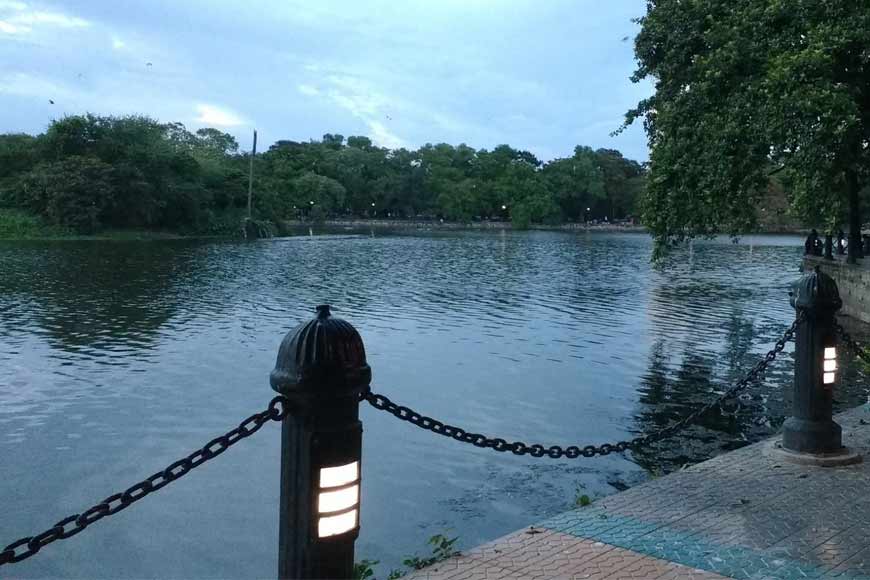
TIf trees are about grace and beauty then a Tree Walk down Dhakuria Lake displays a rare show. One such graceful tree is the Takoli or Chakemdia Tree with a buttressed pale trunk and roundish peel-off marks. The branches are slender, drooping - leaves feathery and compound. Leaflets are small, oval, often with a notch at the tip. This graceful tree looks spectacular in May when mauve-colored pea-like flowers grow in great profusion in small one-sided spikes. A native of India, this tree is very rare in Kolkata.
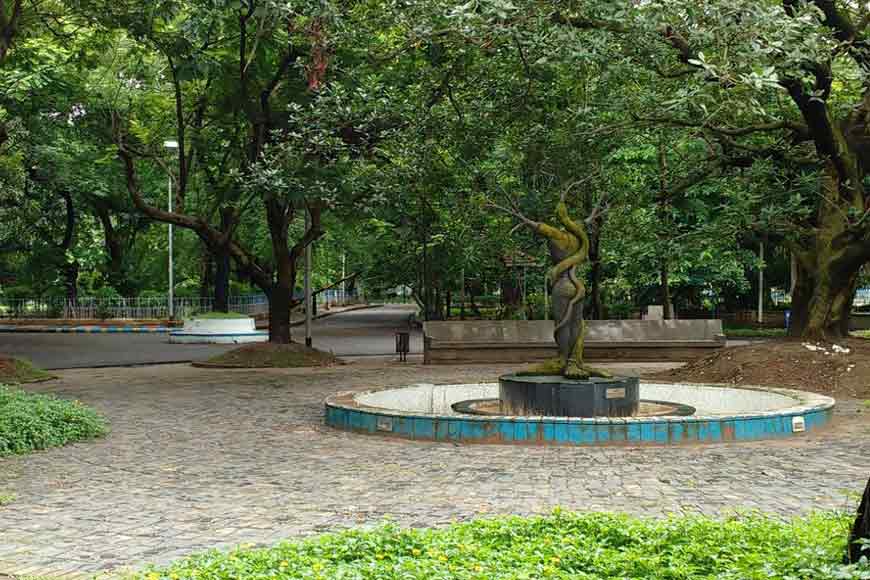
Just like the Teak, another priceless Tree of Dhakuria is the Spanish Mahogany. Keeping the Takoli on your left, exactly to your right, close to the tar road there is mahogany; the famous timber tree with a stout trunk and grey-brown flaky bark. Leaves are feather compounds with 2-5 pairs of leaflets. They are roughly of the size of neem, but unlike neem not toothed and are a much darker green. During March-April, when new lighter green leaves emerge, this otherwise somber-looking tree gets a gay look. Flowers and fruits are inconspicuous. This is the ‘original’ Spanish mahogany. There is another variety, also present in the Lake, known as Honduras Mahogany which has a larger and even darker green leaf.
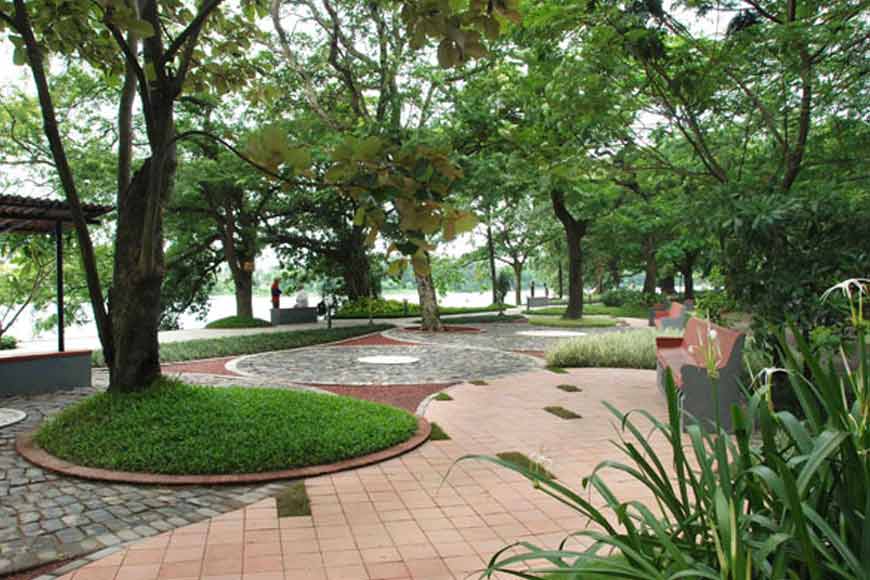
Another interesting tree that has reached the shores of Kolkata from Brazil in the 1930s is the Rain Tree, locally known as Biliti Shirish. Around 20 steps from takoli/mahogany, on your left, you will find a rain tree with a short thick bole and a very wide-spreading canopy. Leaves are twice feathered, and flowers are pinkish and puff-like produced mostly. Pods are 6-8 inches long, narrow, flat, and become black when ripe. Of late many rain trees are dying in Kolkata probably due to mealybug infestation. The name ‘Rain Tree’ apparently came from the fact that in some places it is infested by Cicadas, which discharge moisture in form of tiny droplets that fall somewhat like rain from the tree.
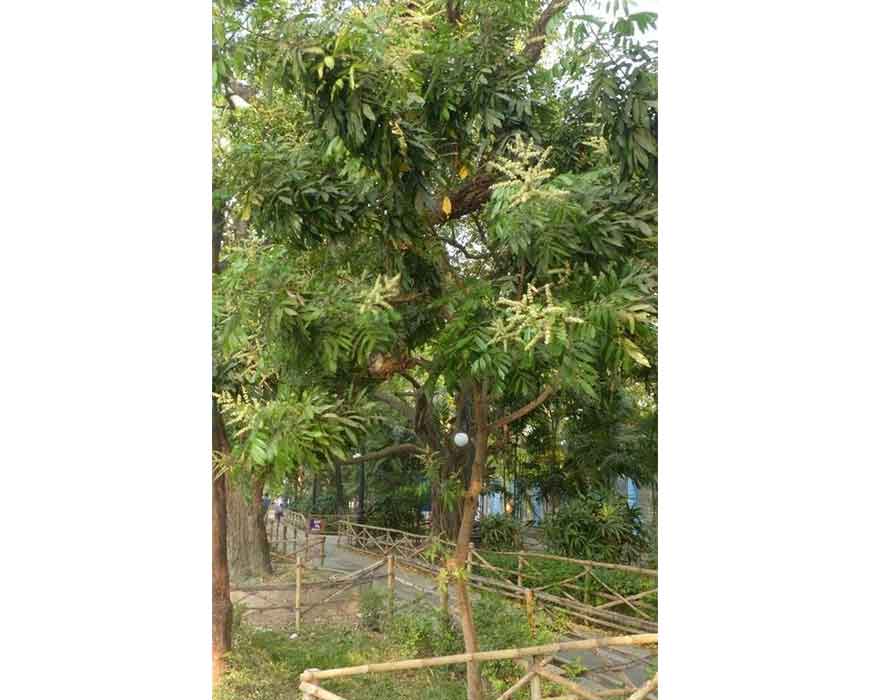 Soap Nut
Soap Nut
If your childhood winters were spent shampooing your hair with Ritha or Soap Nut, quite naturally you were curious to know from where these nuts came. Such a Soap Nut Tree is found near the Rain Tree in Dhakuria Lake. Though many of us have heard about Ritha, few of us have seen it. These tree flowers in March look like Mango flowers. Fruits are more familiar yellowish-brown drupes with a black round seed. Originally from China & Japan, this tree has been naturalized in India for ages.
Other than the Mahogony trees, the Lake area has some priceless timber trees like the Sisham Trees. The Sisham flowers in February-March, just after the beautiful pale green new leaves appear in drooping branches. Flowers are yellowish-white, fragrant but not prominent. This is an Indian tree found in the foothills of the Himalayas. Sisham is one of the finest timber trees in India.
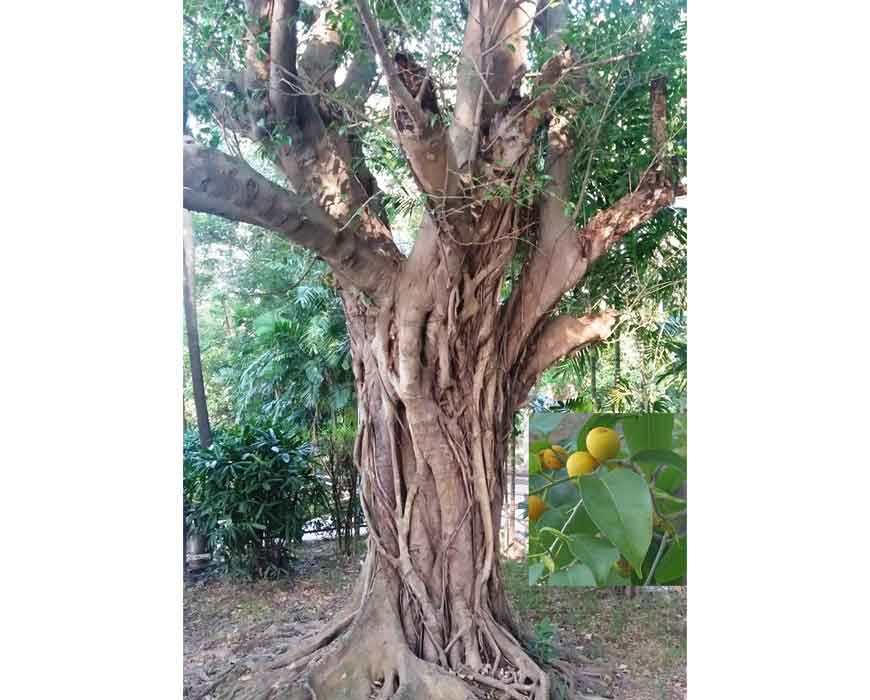 Java Fig
Java Fig
Just 10 steps from the Sisham tree are Java Fig Trees with leaves somewhat similar to sisham. There are quite a few varieties of this tree and also a few hybrids and cultivars as this is a popular tree for bonsai, indoor planting, and landscaping. This grows orange-yellow figs in March-May with another “crop” in August. Though it is found in the wetter part of India, it is probably not natural in Kolkata.
Another graceful tree spreading a spectacular canopy nearby is the Casurina. Originally from south-east Asia and Australia, this tree is planted widely in India, especially in coastal towns. Male flowers thin yellowish-brown spikes at the end of twigs. Female flowers, usually in separate tree, are in axils 1/2'' long wide with reddish threads.
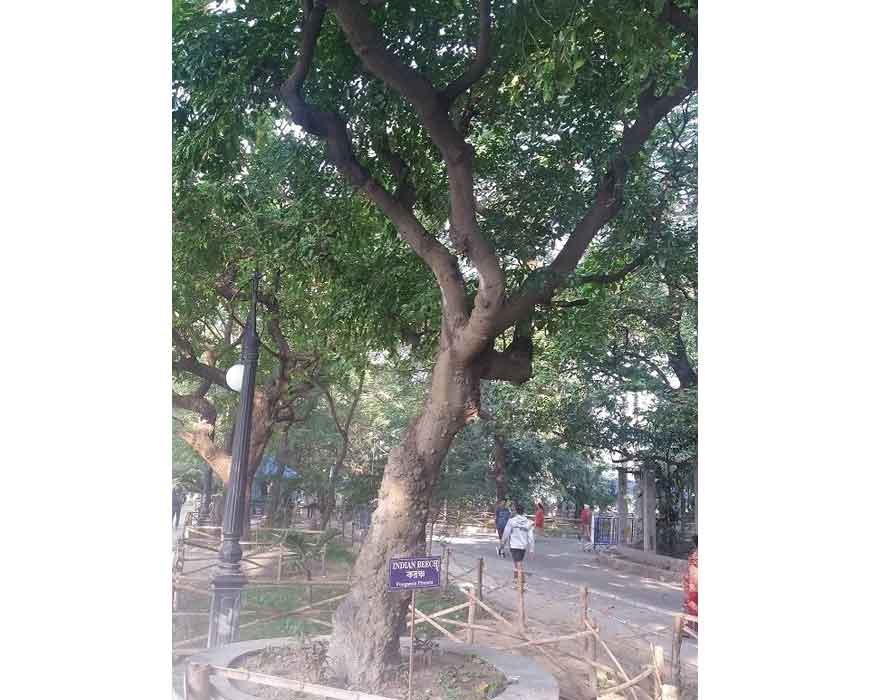 Karanj
Karanj
A few steps from the Casurina stands a Karanj Tree, a tree that has a warty look like the ones in fairytales. With dark green glossy feather compound leaves, Karanj is a native tree usually found beside watercourses. It’s quite popular as both roadside and compound planting. But one tree in the Lake area that attracts attention is the Freshwater Mangrove Tree or Hijal. Usually found in a wide area from Afghanistan to Australia, this tree usually grows near rivers and marshy banks. No one knows how these trees reached Kolkata’s Lakes, probably they were self-grown.











